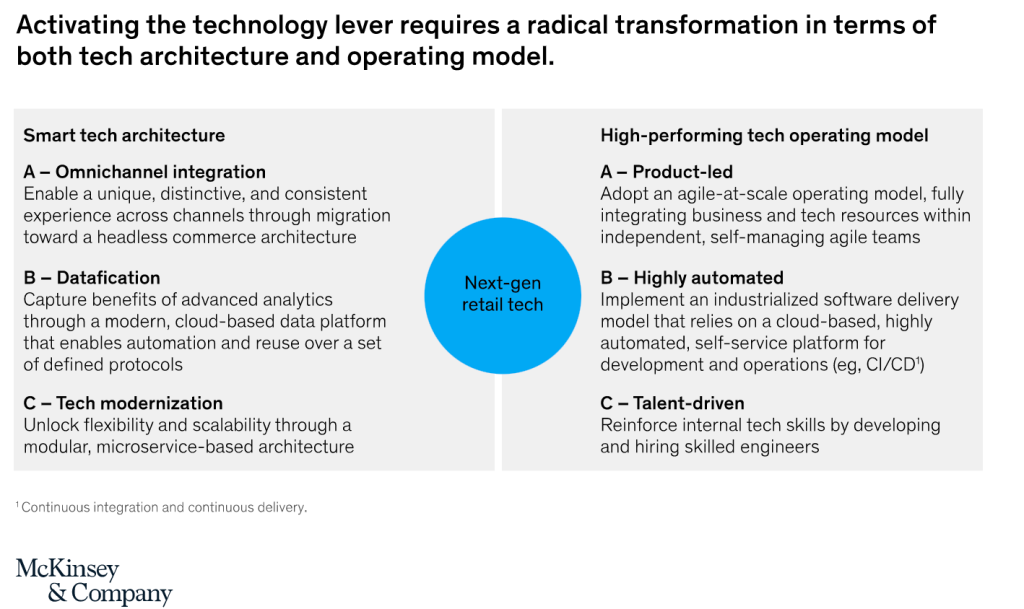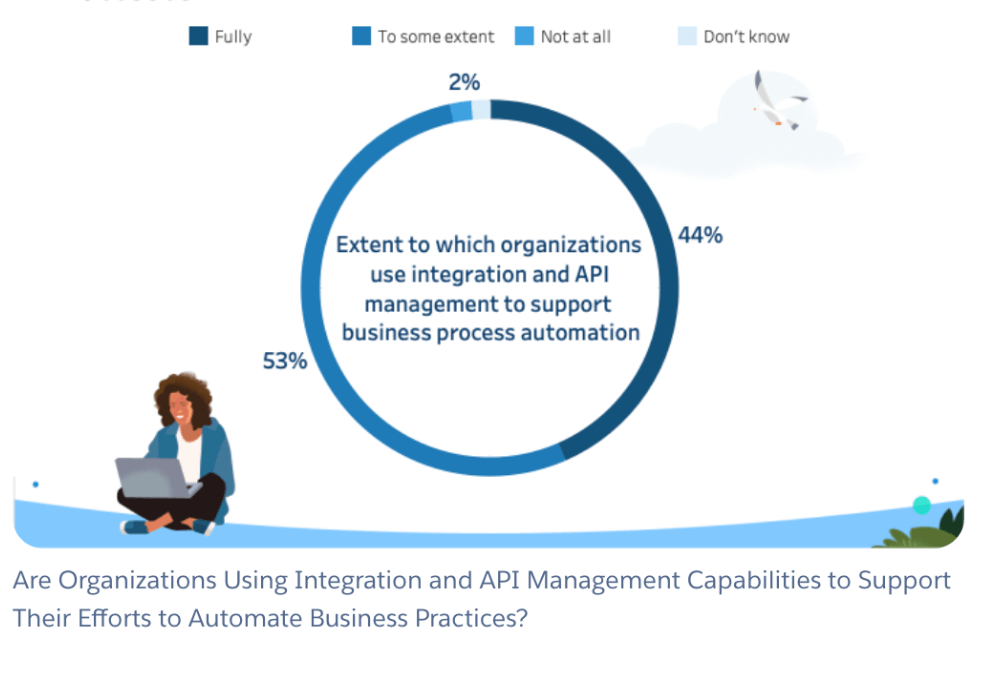Has your retail business undergone a metamorphosis in the last five years?
Automation in retail can make the difference between becoming a butterfly or staying a caterpillar. The rise of e-commerce, omnichannel, personalization, and changing customer behavior has reshaped the retail industry. The pressure to grow revenue and improve margins are top of mind. Retailers must undertake a digital transformation through radical automation of their technology and business functions. By combining automation and redesigned operational processes, organizations will lower operational costs 30% by 2024.
Digital automation will transform your business
Retail has become increasingly digital over the past decade. Reliance on digital technologies has been accelerated by the pandemic and the tightening of profit margins. As customer expectations and competitive threats increase, digital technologies and automation are about to blossom. Today, retailers must find ways to emerge from the cocoon as a butterfly or forever remain a caterpillar.
To achieve the “butterfly effect,” organizations must approach digital transformation by breaking down core business capabilities into building blocks that can be used in every process and accessed through any channel. Taking this composable approach to automating your business will help you meet high customer expectations and reduce costs of failed innovation projects. There are three key areas where automation can help: streamlining order tracking, managing customer loyalty programs, and communicating with customers. To decrease their team’s time spent doing hands-on work, 72% of business owners use (or will use) automation.
A McKinsey report clearly identified the steps that retailers can take to upgrade their technology foundation and speed of delivery of new solutions:
- Focus on a highly-automated development platform with built-in governance and security.
- Promote adoption of the composable approach. It’s important to implement best practices for business processes.
- Get granular and break up monolithic solutions to create a microservice-based architecture that can increase flexibility and reusability of processes and data while accelerating delivery.

Automation is difficult and requires detailed planning and design
Nearly half (47%) of IT decision-makers (ITDMs) say it’s difficult to integrate end-user experiences, including shoppers and employees. Seamless connectivity between applications, data, and devices is a prerequisite towards achieving this goal. With IT and security skills in short supply, the focus should be on providing such capabilities out-of-the-box so that even non-technical users can deliver digital innovation securely. Clearly identifying the business processes, data, and applications that need to be automated will be critical to the success of your automation initiative.
Revolution Beauty has a powerful story on automating product launches, as they launch about 30 products per week. Their automation allowed faster time to market and a better customer experience with reliable and trusted product details so customers make informed decisions when they shop.

Focus automation on key retail business processes
Seventy-two percent of retail customer interactions are now digital. The retail industry is still in the early stages of adoption of automated software development best practices. The definition and implementation of these practices will be a core element in achieving next-level performance in the retail industry. Speed and scale must be priorities for retailers to enable automation across the enterprise.
This starts with forming cross-functional teams to promote visibility of business systems and processes that enable automation. These teams will be able to manage the end-to-end delivery of the solutions and expedite time to market for automation using a composable approach.
A composable approach allows businesses to be more flexible and adaptable by knitting together software with APIs. This creates tools to run specific business processes, rather than adopting processes to the vendor’s best practice design in a single, monolithic application.
Data automation leads to customer trust and loyalty
In the retail industry, data reigns. It’s imperative that retailers put to good use the immense amount of data they collect to improve the shopping experience and drive convenience for their customers. That requires a technology-supported data governance model to collect, clean, organize, maintain, and share data in a timely and transparent manner.
Information is often not readily accessible to the retail stakeholders who need it. It’s fragmented across systems and is not well organized, making it difficult to make timely sales, marketing, and inventory related decisions. Pilot Flying J integrated their data to automate schedule availability and communicate promotions to customers, delivering an incredible customer experience.
User access to data is just one issue. Retailers are also facing fresh data security and privacy challenges as data volumes continue to rise. Personally identifiable information (PII) and financial data in the wrong hands can be very damaging. Governing access to sensitive data, mapping data types, and knowing where data is stored are critical to effective data governance.
Retailers need to fully understand where data resides to ensure customer privacy and satisfy requirements, such as the GDPR’s “right to be forgotten”. Data governance provides a foundation for retailers to improve data security, privacy, and compliance with regulations such as GDPR, which affects any retailer engaging with EU citizens. A big part of digital transformation in retail is to ensure that the customers’ data is safe and transactions are secure as they move more of their purchasing power online.
Conclusion
The retail industry has seen a metamorphosis over the last five years: the rise of e-commerce, omnichannel, changing customer expectations, and growing supply chain complexity, which means retail brands need to break down complexity into small building blocks and define a composable approach to automation.
The “butterfly effect” is the idea that small things can have non-linear impacts on a complex system. As John Gribbin notes in Deep Simplicity, “Some systems … are very sensitive to their starting conditions, so that a tiny difference in the initial ‘push’ you give them causes a big difference in where they end up, and there is feedback, so that what a system does affects its own behavior.”
Streamlining order tracking, managing customer loyalty programs, and communicating with customers are the top three areas where automation will have a larger impact on where you’ll end up. It’s time for your metamorphosis from a caterpillar to a butterfly!
For more information about the state of digital transformation through a retail and consumer goods lens, dive into MuleSoft’s latest report.









